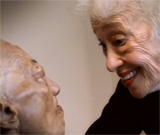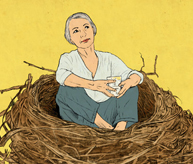 Environmental cues tend to shape our actions because they subtly license us to behave poorly. And perhaps vice versa.
Environmental cues tend to shape our actions because they subtly license us to behave poorly. And perhaps vice versa.
The linkage between social order and crime was demonstrated by the “Broken Window” theory, put forth by James Q. Wilson and George L. Kelling in a 1982 article for The Atlantic Monthly.
 There is not a single version of “you” and “me,” writes Adam Alter in his recent article (shared below) in the New York Times (
There is not a single version of “you” and “me,” writes Adam Alter in his recent article (shared below) in the New York Times (
 Sexual pleasure among young adults (ages 18-26) is linked to healthy psychological and social development, according to a study by researchers at the Johns Hopkins Bloomberg School of Public Health. The study (funded by the National Institute of Mental Health) is the first to use a representative population sample of heterosexuals (3,237 participants) to find a relationship between key developmental assets — specifically empathy, self-esteem and autonomy — and sexual pleasure.
Sexual pleasure among young adults (ages 18-26) is linked to healthy psychological and social development, according to a study by researchers at the Johns Hopkins Bloomberg School of Public Health. The study (funded by the National Institute of Mental Health) is the first to use a representative population sample of heterosexuals (3,237 participants) to find a relationship between key developmental assets — specifically empathy, self-esteem and autonomy — and sexual pleasure. In her thoughtful Atlantic cover story on gay marriage (
In her thoughtful Atlantic cover story on gay marriage ( In a few short years, drugs aimed at boosting low libido among women may be approved for sale. In his recent New York Times article (
In a few short years, drugs aimed at boosting low libido among women may be approved for sale. In his recent New York Times article (
 Sally Satel, psychiatrist, scholar and co-author of the forthcoming book “Brainwashed: The Seductive Appeal of Mindless Neuroscience,” challenges the authority of the soon-to-be-published DSM-5, the diagnostic “Bible” in the psychiatric world.
Sally Satel, psychiatrist, scholar and co-author of the forthcoming book “Brainwashed: The Seductive Appeal of Mindless Neuroscience,” challenges the authority of the soon-to-be-published DSM-5, the diagnostic “Bible” in the psychiatric world.